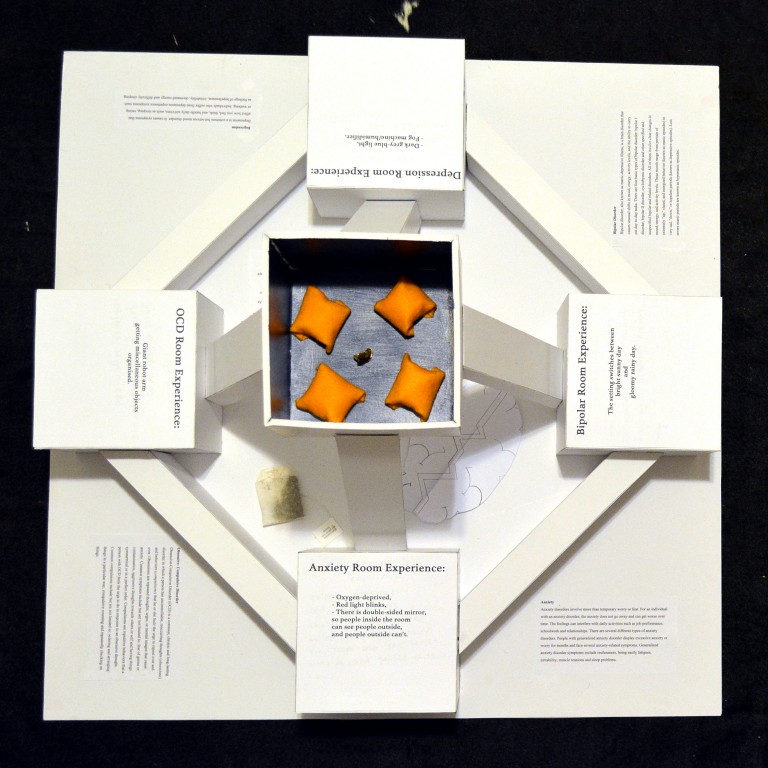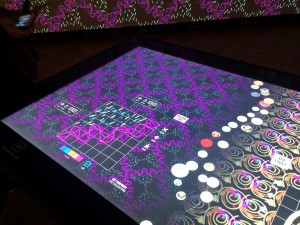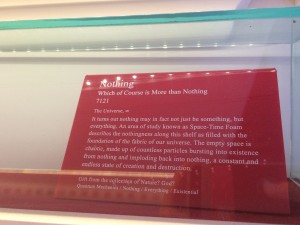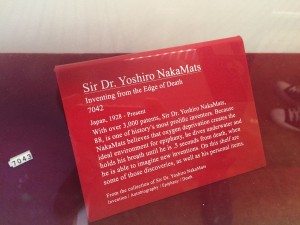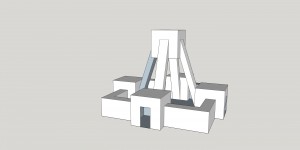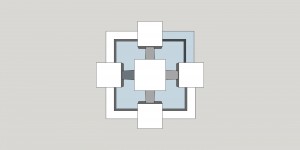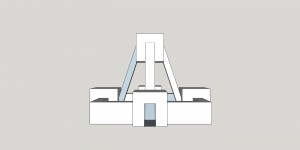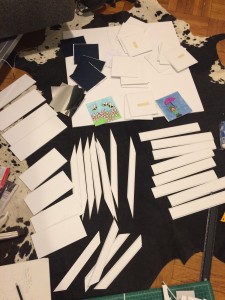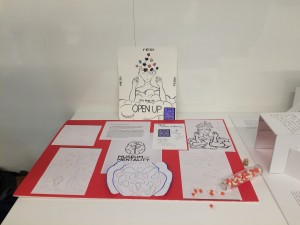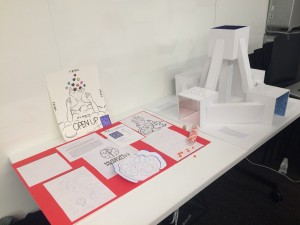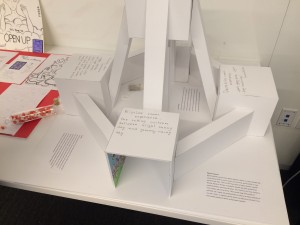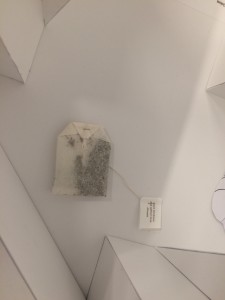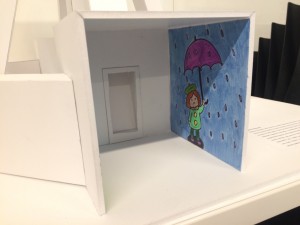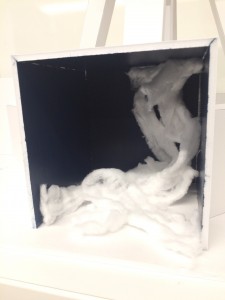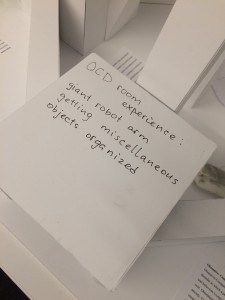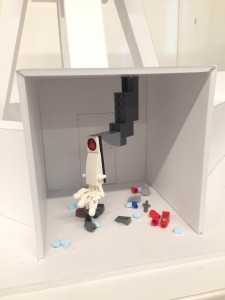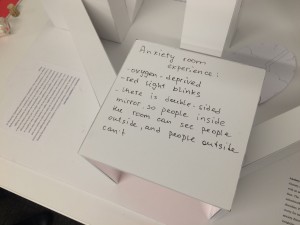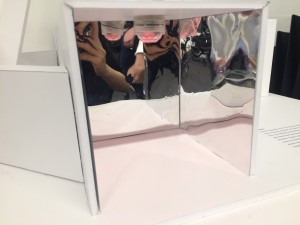For this assignment we had to think about concept of memory in public places, and to create and curate the museum.
That was a group project, and my group was interested in theme of identity, and to narrow it down interest came to mental diseases exhibition. I suggested an idea of maze experience, where one can go from room to room and participate. We all know how a lot of people suffer from mental diseases, but very often remain silent, or don’t solve it properly. We wanted to provide a solution, especially to young people 16-30 y.o. , because when you are younger you sometimes don’t even understand you have certain problems, you don’t know what you can do to make your life easier. We wanted to walk people through experiences of feeling like you are in certain situation and show them that this is ok to have this experience and that’s help is there.
As the sketch shows, initially we wanted each room to have 2 exit choices, that would have signs “help” and “no help”. The “no help” was called “i’m fine” or “i’m cool”, referring to us pretending that we are ok, this door would open up to hallway that would lead to entrance, which would create “the loop” experience, coming back over and over to the same experience, until you would realize you actually do need “help”. Each “help” door from each experience room would open up to long tall staircase leading to one room, which would be calm meditative communal environment. From that room everyone will take elevator down to common area, where they can visit herbal tea cafe, and information booth, that provides different flyers to therapies, and alternative medicine, also yoga and meditation practices and different other groups that can be helpful.
All rooms for mental diseases also connected one to another, so person can experience all of them.
We decided to let go of idea ” I need help” and “I’m fine”, for the reason that it’d make our model too complex for presentation. (but in theory we would still build it).
We started a research on most common mental diseases, and came out with a list of 10 most common ones, for the purpose of assignments time frame we decided to shorten the list to 4 major ones – anxiety, depression, OCD, and bipolar disorder.
We did a lot brainstorming on how we should showcase those experiences, we read blogs where people shared what they are going through. Some ideas we had would become too crazy, something that would be absolutely impossible to create physically giving amount of time we had and resources. We decided to simplify our ideas.
As part of the assignment 2 visits to museums were made – Cooper Hewitt and Mmuseumm.
After we more less agreed on our sketch for museum plan, i created a 3d model of it:
While i was building the actual model i decided to shorten hallways that go from room to room to save time, and also for the reason that person that actually walks from room to room would want to get to destination faster too.
Initially, during the research we came to conclusion that there are a lot of intersections between those diseases, and also person with one disease can have another one, or two, so we though it would be cool to exhibit some art in those hallways too. On intersection of anxiety and depression could be one shared activity as overeating which could be represented in additional artwork. But again for simplicity of presentation, that wasn’t showcased.
Ideally, this model would be way more complex.
Also stairs, so tall literally representing long tiring walk to help, which is not easy, would have some art as well showcasing challenges along the way.
Next step was to decide on the size. The bigger room, the better that would be, but also the model has to big not too huge, so there must be a balance. I made few mock ups and established that 6 by 6 by 6 inch size is the best.
At that point we kept being confused on how would we include in the model some experiences. How would we show OCD experience? I liked the idea of having few rooms, where you go from one to another and see same non-sense activity, or what Lillian suggested during peer review is to create a line and have an experience of some robot being stuck being paranoid to cross it, and you would be able to join him. All these ideas, and other ones for different rooms seemed like impossible to show inside the physical model. I would like to have some kinetic little doll crossing the line, but it seemed like impossible task.
After we agreed on sizes, i prefabrictated walls with 45 degrees angles cut out and gave Jenny to draw bipolar experience – switching mood from sunny to rainy day, and dark greish-bluish color for depression.
Further, i cut out all other parts on perfect angles that i was to measure from 3d model and assemble the model. I added lego robot arm, that was sorting some random objects in OCD room, and pillows for help meditation room, and more touch ups Jenny and I finished for the model.
Such things as oxygen deprivation or humid we just had to list , as we didnt know how to physically showcase them.
We also included descriptions on our model for our picked mental diseases.
Alice meanwhile created logo and poster – i.e. branding materials.
This is how our presentation looked like:
The model with fixed printout labels:
